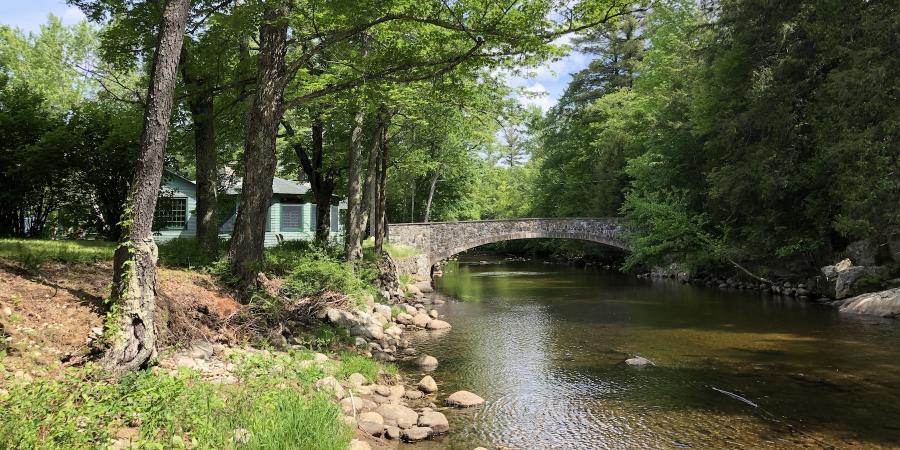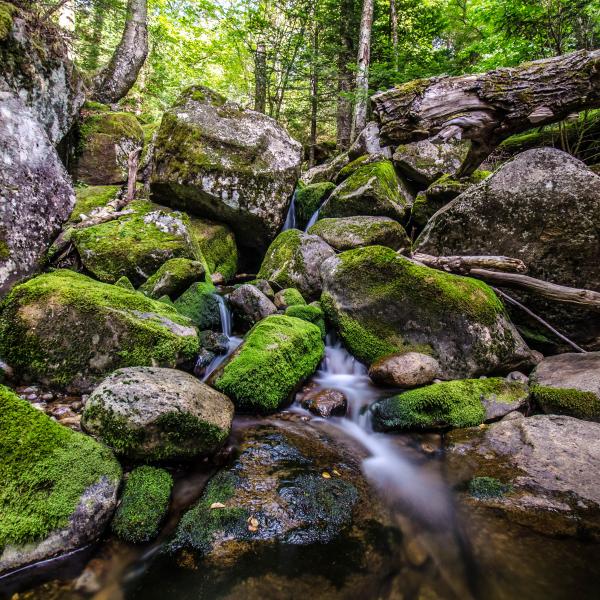Protecting Riparian Buffers
Thick buffers of native trees, shrubs, and grasses are essential to water quality and to the health of small brooks, lakes, and large rivers. They shade and cool surface waters, filter runoff from developed areas, and provide shelter, forage, and food for wildlife. Their root systems hold stream banks secure, protect groundwater, and absorb flood waters. If you own property along a streambank or shoreline, a healthy riparian buffer will protect your property, aid stream health, and enhance habitat for wildlife.
If you already have an established riparian buffer, do not cut it down. Large trees, though they may block your view of the river, serve as anchors for a healthy streambank or shoreline. To plant a new buffer or augment an existing one, select water-tolerant native trees and shrubs for areas closest to the water. Further back, on the edge of the floodplain and above it, fast-growing shade tolerant native trees and shrubs work best. In areas farthest from the water, plant upland trees, shrubs, and grasses. Each of these areas works to slow and absorb runoff and nutrients, prevent erosion, and provide essential shade and habitat for wildlife.
Preventing Bank Erosion
Bank erosion occurs when human or natural disturbances cause streambanks to become unstable due to loss of vegetation, increased runoff (from nearby impermeable surfaces, for example), soil compaction, and/or changing or obstructing stream flows. Unstable banks cause bank slumping, undercutting, and collapse, threatening property and degrading habitat. Bank erosion also dumps large amounts of sediment into streams and rivers, contributing to poor water quality and smothering vital aquatic habitat for miles downstream.
You can stop bank erosion before it begins by protecting stable banks. Don’t cut down or remove existing streamside vegetation, avoid driving vehicles near bank edges to minimize soil compaction, and minimize high velocity runoff in your yard. Protect and, if needed, plant dense native buffers along streams and ephemeral waterways.
For advice on maintaining or restoring a riparian buffer on your streambank or shoreline, or for help assessing badly eroded streambanks, contact the Ausable River Association: contactus@ ausableriver.org.



